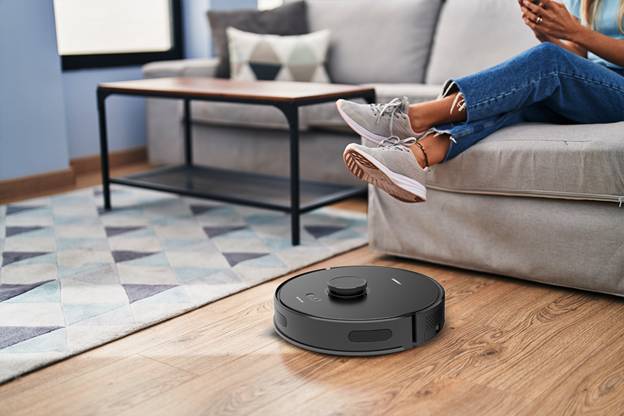How corporate cafeteria firms operate

A commercial cafeteria is a location where workers of a firm may have lunch without departing their workplace. Every meal might be covered by the employer, the worker, or both. Corporate cafeterias could also service whole buildings that house several enterprises.
Office cafeterias provide several advantages. As the employer, you have the opportunity to give a benefit that your workers will value, whether it is a subsidized cafeteria or workers paying full price. Some businesses handle their cafeterias entirely in-house, although it is generally easier and less expensive to engage a management firm.
What Do Corporate Cafeteria Firms Do?
Food Ordering
National food suppliers have ties with corporate cafeteria providers. They may also negotiate discounts on most of the foodstuff they purchase since they order from establishments throughout the country. This benefits both them and you since it saves you cash. The better the bargain the management firms receive on their foodstuff, the lower they have to price it up to make a profit.
Menu Planning
Corporate cafeteria management firms design menus for every cafeteria depending on the ingredients they can order. Corporate cafeteria menus can vary significantly in terms of the types of delicacies and the diversity they offer.
However, diversity is sometimes cited as a disadvantage of these types of corporate eating facilities. Chefs obtain the same ingredients regularly because of national-level discounts. As a result, they’ll go through the same meals every 3 – 4 weeks. Even if they are eating wonderful cuisine, employees become tired of having the same thing frequently.
Food Preparation
Every day, your cafeteria’s chef will supervise the making of the day’s meals. Almost always, it’ll be a lunch; however, based on your contracts, they may also provide breakfast, coffee, or snacks.
One of the main reasons commercial cafeteria management firms are so beneficial is that they make all of the meals. Every day when employees visit the cafeteria, they receive freshly prepared meals.
Serving Food
Cafeteria staffs serve the food to employees of your firm once it has been prepared. This can occur in a variety of ways. There may be serving stations similar to those seen in school cafeterias.
However, to cut costs, some of these firms are adopting a self-checkout approach. Others may provide packed lunches that are convenient to grab and take to a meeting or return to a worker’s desk.
How Do Cafeteria Management Firms Make Money?
You may pay for a canteen management firm in a variety of ways. However, based on how you charge and arrange your cafeteria, you can expect you’ll be paying standard management or contract charges.
A capped or restricted subsidy system, for instance, requires your firm to pay the management organization a set amount every month or year; whenever the management company exceeds that amount, they are accountable for the expense.
In comparison, with a full subsidy, your organization covers all of the cafeteria provider’s expenses. This is a difficult situation since the management firm has no motivation to minimize its overhead expenditures.
The management firm also receives a portion of the proceeds from every meal. It is down to you if that comes from your workers, the company, or both.
Budgeting, cash management, and other costs may also be discussed. Again, how you pay for these is determined by your agreement with the cafeteria management.
It might be tough to determine how much you will pay. Each vendor will provide you with a customized quotation for your in-house canteen. However, you can expect that the management costs will be substantial.
What’s Wrong With Commercial Cafeterias?
• Failure to satisfy consumer demands
• Menu fatigue
• Reduced participation
• Increasing costs
How Corporate Cafeteria Businesses Can Change
So, it’s apparent that office cafeterias have certain issues. However, vendors of these services are attempting to enhance employees’ cafeteria experiences. And there are some options available to them.
Increase the variety
Whenever employees first begin using a cafeteria, they will believe there are lots of choices. A 3-4 week meal cycle contains a variety of possibilities. However, after a few months,
employees will become bored of the same rotating alternatives. As a result, cafeteria services must provide more variety.
The easiest way to do this is to collaborate with local eateries and caterers that use their ingredients. Commercial cafeteria management firms might rotate chefs, emphasize diverse menus, or collaborate with local suppliers to get more seasonal and diverse ingredients.
Prioritize Authenticity
The modern corporate cafeteria must provide more than just what is convenient, depending on which food items are available.
It must place a premium on authentic eating experiences. Often, this involves delegating menu selections to a chef rather than focusing only on profitability. Chefs have distinct styles that result from years of expertise and devotion to a specific cuisine. That is just not possible with the conventional corporate cafeteria concept.
Commercial Cafeteria Management Companies Face a Difficult Battle
It’s simple to see why Popup restaurants are such a popular business eating option. They provide company owners with everything that management agencies do not—without charging a fortune. Will commercial cafeteria management firms evolve in time to preserve the sector? Or will more sophisticated corporate dining halls displace them? All we can do is wait and see.



